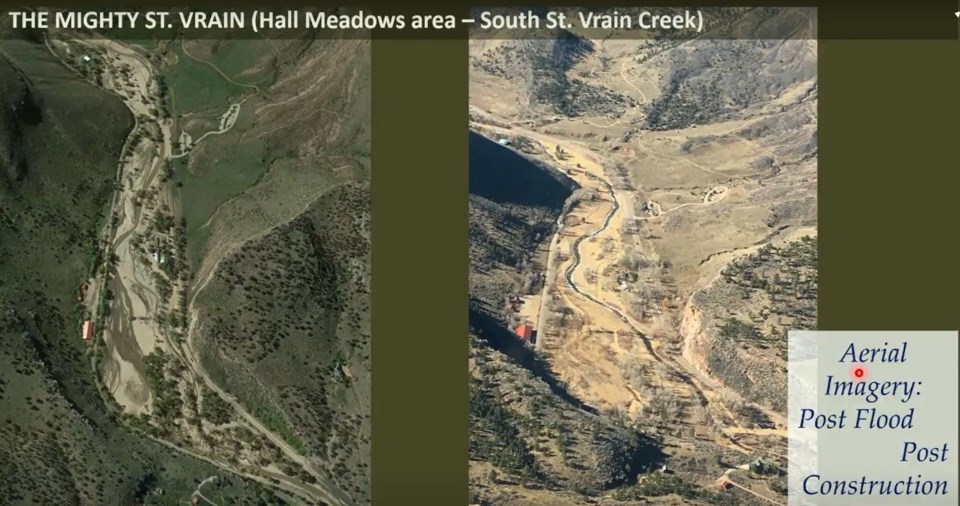Nearly 10 years after seven days of severe flooding decimated parks and open space in Boulder County, the department has completed the $20 million worth of recovery projects funded by the Federal Emergency Management Agency.
Over the course of recovery, parks and open space completed more than $40 million worth of work along all the major creeks in Boulder County at most park and trail facilities in the foothills and plains, Principal Planner Justin Atherton-Wood told the advisory committee on Thursday. Significant improvements were also made to reservoirs and ditches to improve their resilience to future flooding.
When 18 inches of rain fell on Boulder County over the course of a week, ponds and trails were destroyed, leaving debris everywhere. Atherton-Wood said within the first two years of recovery, the county was able to repair 20 miles worth of trails with the help of volunteers.
The county spent the first years after the flood stabilizing creeks, repairing ditches and removing debris. Improvements were complicated by the Boulder Creek flooding in 2015, along with a few other natural disasters.
“Not to mention Calwood, COVID, Marshall fire,” Atherton-Wood said. “It just keeps coming, right?”
He explained that the “heavy lift” recovery projects started around 2015-2016, namely the complex engineering projects to address the reservoir breaches that occurred during the historic flood. Over $3.5 million went toward the Pella Ponds in Longmont to recover and rebuild trials, add resilience to the ponds there and continue wetland restorations.
Obadiah Broughton, project coordinator and planner for the flood recovery, spoke to the reservoir project along the St. Vrain from Highway 36 to Hygiene Road that cost more than $22 million. Work included repairing breaches on the reservoirs, removing 250,000 cubic yards of deposited sediment, adding emergency spillways and much more.
“Another large component of this project as with all these flood restoration projects was paying attention to our natural resources on this amazing open space,” Broughton added.
The next step for parks and open space with this area is to revisit the 2004 St. Vrain Trail master plan goal of connecting Longmont to Lyons.
“We’re excited to get to work on that connection,” Atherton-Wood said. “It’s definitely a priority.”
With the $20 million spent on FEMA specific projects, the county will be getting all but $900,000 back. Other projects have been mostly funded in partnership with other contributors, about $21 million in additional projects with the county contributing $3.3 million.
Atherton-Wood highlighted the department’s ability to leverage recovery funding while improving partnerships across the county.
“Our relationship with Longmont really was strengthened through the recovery process,” he said.
He also emphasized the improvements made through this recovery work, including increasing resilience of public facilities, improving flood routing and enhancing native habitats.



